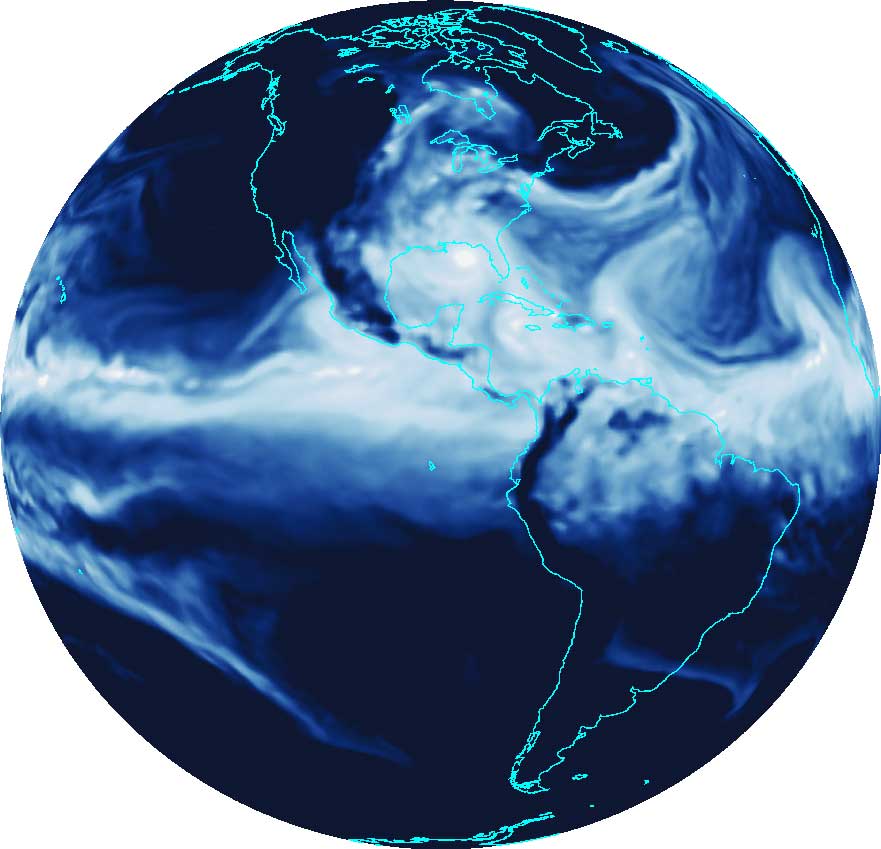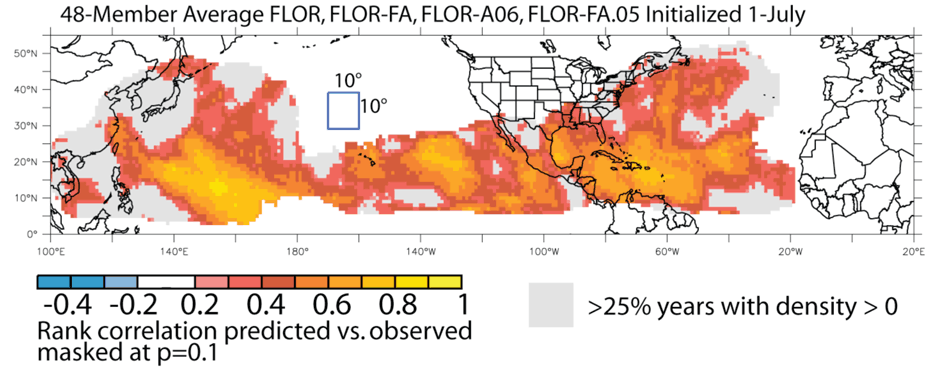August 13th, 2014
Key Findings
- The new high-resolution climate model, GFDL-FLOR, exhibits substantial skill at recovering the key features of regional tropical cyclone activity, especially after systematic model errors are corrected.
- Long-lead (i.e., multiple months) forecasts of seasonal hurricane frequency in the Atlantic with the new system outperform other published methods.
- FLOR exhibits substantial skill at predicting regional-scale, year-to-year variations in seasonal tropical cyclone activity over the period 1982-2011.
- Correcting systematic model errors in the simulation of surface ocean temperatures leads to improved prediction skill for North Atlantic hurricane frequency. It also leads to substantial improvements in the skill of seasonal prediction of regional tropical cyclone activity – adding more than three months to the prediction horizon.
G.A. Vecchi, T. Delworth, R. Gudgel, S. Kapnick, A. Rosati, A.T. Wittenberg, F. Zeng, W. Anderson, V. Balaji, K. Dixon, L. Jia, H.-S. Kim, L. Krishnamurthy, R. Msadek, W.F. Stern, S.D. Underwood, G. Villarini, X. Yang, S. Zhang. Journal of Climate. DOI: 10.1175/JCLI-D-14-00158.1.
Summary
Tropical cyclones (TCs, which include hurricanes and typhoons) are a major climate hazard across the Northern Hemisphere, and have exhibited variability and change on year-to-year timescales. Understanding and predicting future year-to-year TC activity is central to NOAA’s mission and highly relevant to society. Of particular relevance for decision support is predicting seasonal activity on regional spatial scales (scales smaller than the entire basin) – a goal that has remained elusive.

The authors use a new high-resolution coupled climate model (GFDL-FLOR) to assess predictions of regional seasonal TC activity produced up to three seasons in advance. These predictions are for activity on spatial scales much smaller than, for example, the entire Atlantic basin. The authors first demonstrated the model’s ability to simulate regional TC activity, as well as the more traditional prediction of basin-wide hurricane frequency in the Atlantic. The impact of systematic errors in the climate model (model “biases”), on TC simulation and prediction, was also assessed.
GFDL-FLOR, developed at GFDL, exhibits substantial skill at recovering the key features of regional tropical cyclone activity, especially after systematic model errors are corrected. In fact, long-lead forecasts of seasonal hurricane frequency in the Atlantic with the new system outperform all other published methods.
These results suggest that high-resolution coupled climate models enable the seasonal prediction of regional TC activity many months in advance– and point towards avenues to improve these exciting and encouraging results. Output from predictions with GFDL-FLOR is being made available to the National Weather Service (and world) through the North American Multi-Model Ensemble for Seasonal Prediction (NMME).
The development of GFDL-FLOR, which has resulted in fundamental enhancements in the ability to predict seasonal TC activity, was enabled by years of climate research and model development at GFDL – including the breakthrough high-resolution modeling efforts of Delworth et al. (2012), Zhao et al. (2009) and Chen and Lin (2013), and the seasonal to decadal prediction efforts (e.g., Zhang and Rosati 2010; Yang et al. 2013). Enhancements to NOAA’s research supercomputing capability including access to Gaea at the Oakridge National Laboratory made this work possible.



